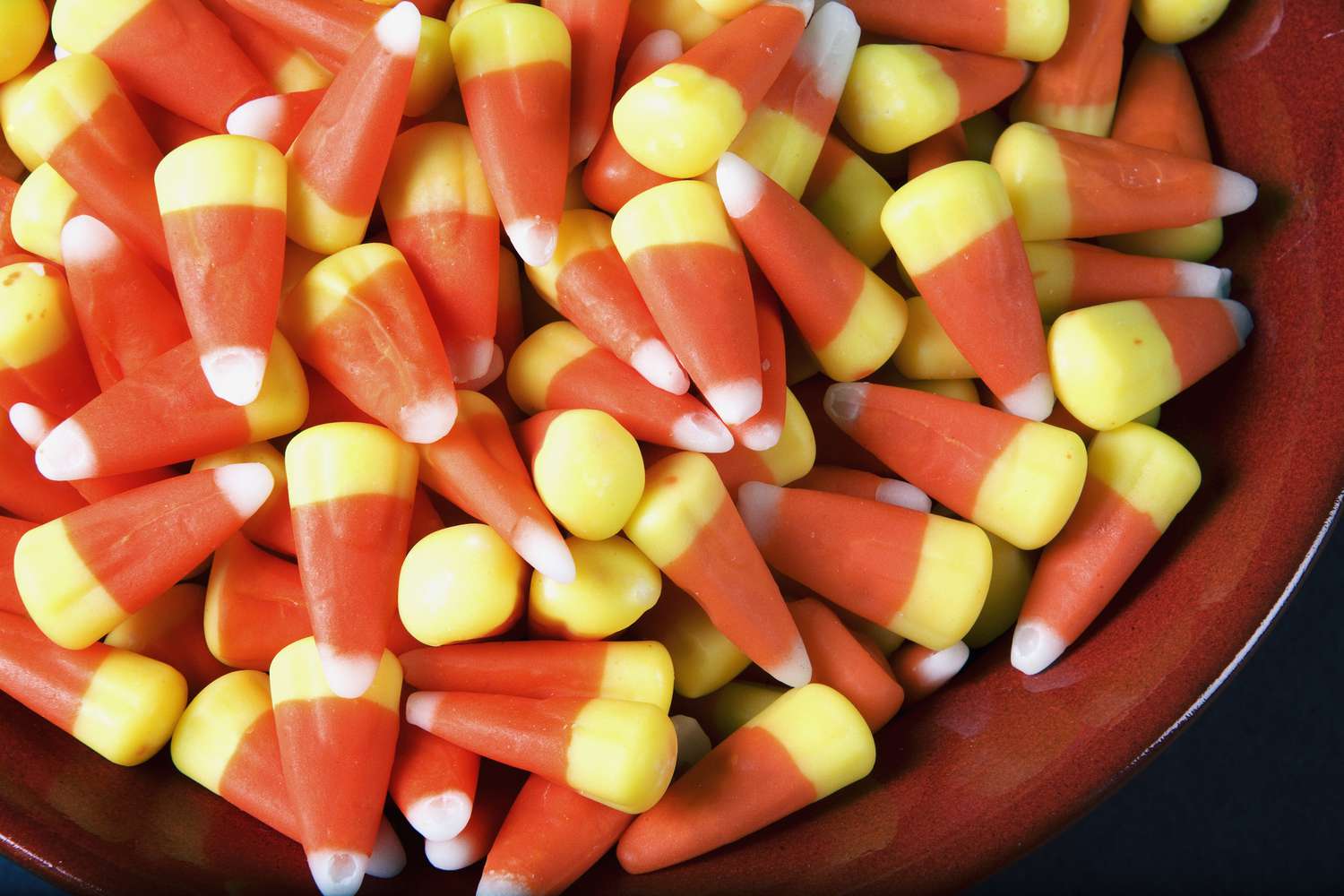
Key Takeaways
- Candy corn is a source of added sugar and lacks any micronutrients.
- One serving of candy corn can provide more added sugar than what is recommended by the American Heart Association for many people.
- Dietitians suggest that candy corn can be a part of a balanced diet for generally healthy people who don’t have underlying health concerns, since it’s a fun and festive food. But it’s important to try to stick to a serving size.
Candy corn is one of the most polarizing Halloween candies out there: You probably know if you love it or hate it. But do you have any idea what it actually is?
Different brands may use slightly different ingredients, but typically, the tiny confection is made from sugar, corn syrup, and artificial coloring. Some candy corn is made with confectioner’s glaze (shellac) to give it a shiny coating.
Newer versions of candy corn, like Brach’s Naturally-Flavored Candy Corn, use ingredients like turmeric in place of artificial colors. Brach’s also uses honey as a sweetener.
“While candy corn’s main ingredient is sugar, it’s a seasonal treat for many that brings feelings of nostalgia and enjoyment,” Washington, DC-based dietitian Caroline Thomason, RD, told Verywell. “If candy corn is a favorite fun food during spooky season, enjoy! Sugar in moderation can help you feel in control with food and satisfied with your diet.”
Candy Corn Nutrition Facts
According to the U.S. Department of Agriculture (USDA), 19 pieces of candy corn provide:
- 140 calories
- 0 grams of protein
- 0 grams of fat
- 36 grams of carbohydrates
- 31 grams of sugars
- 85 milligrams of sodium
Unlike real corn, candy corn doesn’t contain any fiber or any micronutrients.
Does Candy Corn Really Contain Bugs?
Any candy corn that’s made with shellac will list it on the package. This ingredient has raised alarms before since technically, it’s made from bugs. Specifically, shellac is made from the hardened secretion of the lac insect.
“People may be scared off by an ingredient, confectioner’s glaze, that is also known as shellac,” Kacie Barnes, RDN, founder of Mama Knows Nutrition, told Verywell. “There are many additives in food that can sound scary if you don’t know what they are. Food grade confectioner’s glaze has been tested for safety and is recognized as a safe ingredient.”
How Unhealthy Is Candy Corn?
Candy corn is essentially empty calories and added sugar.
The American Heart Association recommends limiting added sugars to no more than 6% of the calories you consume each day. For most females, that’s no more than 100 calories per day, or about 25 grams. For males, it’s 150 calories per day, or about 36 grams. Just 19 pieces of candy corn exceeds the recommended intake of added sugars for females, and comes very close to the recommended daily target for males.
Since candy corn does not contain any macronutrients like protein, fat, or fiber to promote fullness, eating it as a snack may result in a blood sugar spike, especially if you don’t eat it alongside other satiating foods.
“Candy corn can raise blood sugars very quickly, especially for people with diabetes,” Houston, Texas-based dietitian Mary Ellen Phipps, MPH, RDN, author of The Easy Diabetes Desserts Cookbook, told Verywell.
The food coloring used in candy corn may be concerning as well, since some research has linked certain food dyes to toxins and carcinogens. But the Food and Drug Administration (FDA) states that food coloring is safe when used properly.
Should You Avoid Candy Corn?
Candy corn is not something that experts recommend you eat every day. But as long as you are following a balanced and healthy diet, there is no reason to avoid this popular treat if you want something sweet once in a while.
Of course, other sweet treats are better options for satiety or blood sugar control thanks to the macros they contain, such as peanut butter cups, which contain protein and fat. But opting for a small handful of sugar-packed candy corn won’t make or break your health goals if you’re a generally healthy person without an underlying medical condition.
“Eat [candy corn] at a time when you can be mindful and aren’t distracted or stressed so you can get the most satisfaction out of eating it, which helps you avoid eating too much,” certified intuitive eating counselor and dietitian Sarah Anzlovar, RDN, told Verywell. You can also lean on “fun size” candy corn packets to help manage your serving size.
“Candy corn has similar nutritional stats to other candies, and there’s no clear health benefit to choosing one or the other,” Barnes said. “But it is well-documented that restrictive practices around food often lead to undesired consequences, like obsessive thoughts about food and binge eating. In essence, forcing yourself to not eat candy corn—if you really want some—can cause more harm to your wellbeing than just allowing yourself to enjoy some without guilt.”
What This Means For You
If you are a candy corn lover, it’s OK to consume in moderation. But consider eating it mindfully in order to stick to a serving size, or along with a snack with some fiber or fat to help you feel full.
